Telephone Pole Transformers vs Pad-Mounted Transformers: Which One Is Better for Urban Use?
Are you struggling to choose between telephone pole transformers and pad-mounted transformers for your urban project? This decision can significantly impact your city’s power distribution, aesthetics, and budget. Many urban planners and electrical engineers face this dilemma.
For urban use, pad-mounted transformers often have an edge over pole transformers. They offer better safety, aesthetics, and space efficiency. However, pole transformers can be more cost-effective and easier to install in certain situations. The best choice depends on specific urban needs and constraints.
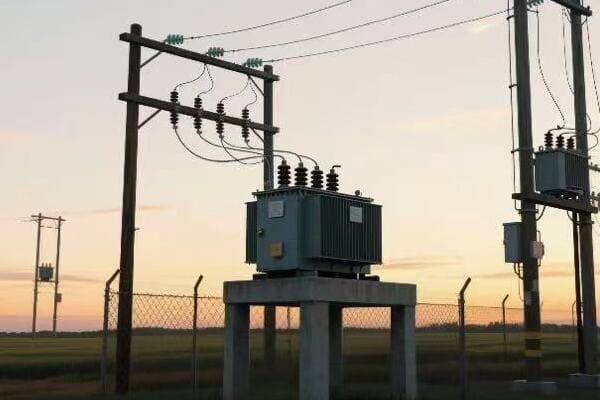
In this article, I’ll dive deep into the pros and cons of both transformer types for urban environments. We’ll explore their design, safety features, visual impact, costs, and environmental considerations. By the end, you’ll have a clear understanding of which transformer type might be best for your urban project.
Design and Functionality: Comparing the Structure of Pole and Pad-Mounted Transformers?
Have you ever wondered why some transformers are up on poles while others are on the ground? The design differences between pole and pad-mounted transformers are significant and can greatly affect their functionality in urban settings.
Pole transformers are compact, cylindrical units mounted on utility poles, while pad-mounted transformers are larger, box-like structures installed on ground-level concrete pads. Pole transformers are more exposed but easier to install, while pad-mounted units offer better protection and accessibility for maintenance.
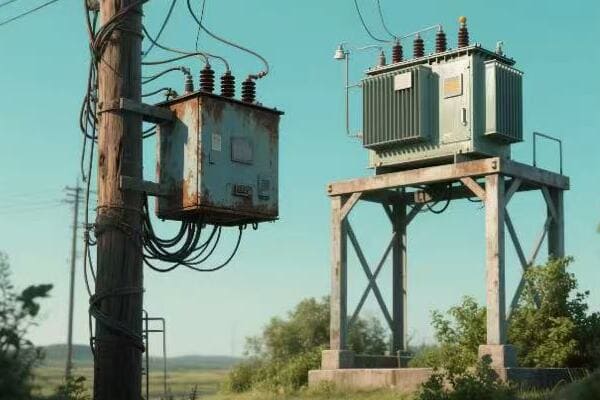
Diving Deeper into Transformer Designs
Let’s break down the key design and functional aspects of both transformer types:
Pole-Mounted Transformers
-
Structure:
- Cylindrical shape
- Typically smaller and more compact
- Mounted high on utility poles
-
Components:
- Core and coils enclosed in a steel tank
- Bushings for electrical connections
- Cooling fins for heat dissipation
-
Functionality:
- Direct connection to overhead power lines
- Gravity-assisted oil cooling
- Limited capacity due to size constraints
Pad-Mounted Transformers
-
Structure:
- Box-like design
- Larger and heavier
- Installed on ground-level concrete pads
-
Components:
- Similar internal components to pole transformers
- Enclosed in a locked metal cabinet
- Often includes additional safety features
-
Functionality:
- Connected to underground power lines
- More efficient cooling due to larger surface area
- Can handle higher capacities
Here’s a comparison table of key design features:
| Feature | Pole-Mounted Transformers | Pad-Mounted Transformers |
|---|---|---|
| Size | Compact | Larger |
| Installation | On utility poles | Ground level |
| Accessibility | Limited, requires lift equipment | Easy, ground-level access |
| Capacity Range | Typically up to 167 kVA | Up to 3000 kVA or more |
| Cooling | Natural convection | Often forced air or oil |
| Connection | Overhead lines | Underground lines |
| Visual Impact | More visible | Less visible |
In my experience working with both types of transformers, I’ve found that the choice often comes down to the specific needs of the urban area. I remember a project in a historic district where we initially considered pole transformers to match the existing infrastructure. However, after assessing the narrow streets and the city’s future plans for underground utilities, we opted for pad-mounted transformers.
The decision proved beneficial in several ways. The pad-mounted units were easier to maintain, reducing service times and improving reliability. They also allowed for higher capacity, which was crucial as the area saw increased development and power demand in the following years.
One often overlooked aspect of transformer design is future expandability. Pad-mounted transformers generally offer more flexibility in this regard. In another project, we installed pad-mounted units in a developing urban area. As the neighborhood grew, we were able to easily upgrade the transformers to handle increased loads without significant infrastructure changes.
However, pole-mounted transformers have their advantages too. In areas prone to flooding, their elevated position can be a significant benefit. I recall a coastal city project where we used pole-mounted transformers in low-lying areas to protect against storm surges and potential flooding.
The choice between pole and pad-mounted transformers also affects the overall electrical system design. Pole transformers work well with overhead distribution systems, which can be quicker and cheaper to install initially. Pad-mounted units, on the other hand, are integral to underground distribution systems, which offer better reliability and aesthetics but at a higher initial cost.
Maintenance considerations also play a role in the design choice. Pad-mounted transformers, being at ground level, are generally easier and safer to maintain. This can lead to more regular maintenance and potentially longer transformer life. However, in areas with heavy snowfall, accessing pad-mounted units can be challenging in winter, a factor I had to consider in a northern city project.
Ultimately, the design and functionality of the transformer must align with the urban area’s long-term vision. As cities move towards smarter, more efficient power grids, the adaptability of the transformer design becomes crucial. In recent years, I’ve seen an increase in the use of smart pad-mounted transformers that can communicate with the grid, providing real-time data and improving overall system efficiency.
Safety and Reliability: Assessing Urban Risks for Both Transformer Types?
When it comes to urban power distribution, safety and reliability are paramount. But how do pole and pad-mounted transformers stack up in these crucial areas? Many city planners and engineers grapple with this question when designing or upgrading urban electrical systems.
Pad-mounted transformers generally offer higher safety and reliability in urban settings. Their ground-level, enclosed design reduces risks of electrical accidents and vandalism. Pole transformers, while reliable, are more exposed to environmental hazards and potential vehicle collisions. Both types have specific safety features and reliability factors to consider.
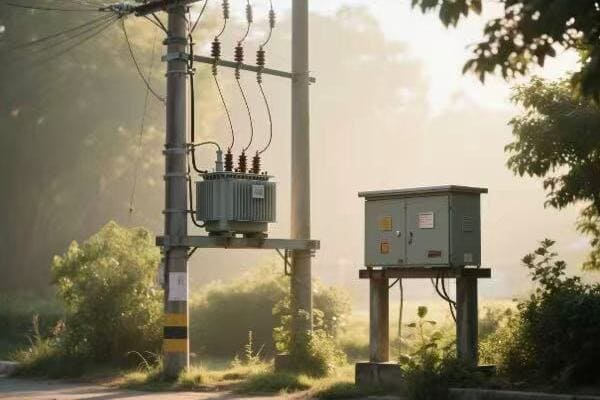
Diving into Safety and Reliability Factors
Let’s examine the safety and reliability aspects of both transformer types in detail:
Pole-Mounted Transformers
-
Safety Considerations:
- Elevated position reduces public access
- More exposed to environmental factors
- Potential risk during storms or vehicle collisions
-
Reliability Factors:
- Vulnerable to weather-related outages
- Quicker to repair due to easy visibility
- Limited capacity can lead to overloading issues
-
Urban-Specific Risks:
- Proximity to buildings and pedestrians
- Interference with overhead lines (e.g., tree branches)
- Potential target for vandalism or theft
Pad-Mounted Transformers
-
Safety Considerations:
- Enclosed design limits public access
- Lower risk of electrical accidents
- Ground-level installation reduces fall hazards during maintenance
-
Reliability Factors:
- Protected from most weather-related issues
- Can handle higher capacities, reducing overload risks
- Underground connections less susceptible to outages
-
Urban-Specific Risks:
- Potential flooding in low-lying areas
- Risk of vehicle collisions, though less severe than pole transformers
- Landscaping and snow can sometimes obstruct access
Here’s a comparison table of safety and reliability features:
| Aspect | Pole-Mounted Transformers | Pad-Mounted Transformers |
|---|---|---|
| Public Access | Limited by height | Limited by enclosure |
| Weather Exposure | High | Low |
| Collision Risk | High (vehicles, falling objects) | Low to Moderate |
| Maintenance Safety | Requires fall protection | Ground-level work |
| Capacity Reliability | Lower, risk of overloading | Higher, more stable |
| Outage Frequency | Generally higher | Generally lower |
| Urban Integration | Can interfere with surroundings | Better integrated |
In my years of working with urban power systems, I’ve seen firsthand how the choice between pole and pad-mounted transformers can impact safety and reliability. I recall a project in a dense urban area where we were replacing old pole transformers. The city had experienced several incidents of vehicle collisions with utility poles, some resulting in transformer damage and power outages.
We decided to switch to pad-mounted transformers, and the results were significant. Not only did we eliminate the risk of vehicle-pole collisions, but we also saw a marked decrease in weather-related outages. The pad-mounted units were less affected by high winds and ice storms that had previously caused issues with the pole-mounted transformers.
However, pad-mounted transformers aren’t without their challenges. In one low-lying urban area prone to flooding, we had to carefully design elevated pads and waterproof enclosures for the transformers. This extra step was crucial in ensuring reliability during heavy rain events.
One often overlooked aspect of urban transformer safety is the human factor. I’ve found that pole-mounted transformers, being out of reach, sometimes create a false sense of security. In contrast, pad-mounted transformers, while more secure, can attract curious onlookers. In one project, we implemented additional public education and signage around pad-mounted units to ensure community safety.
Reliability in urban settings also means considering future needs. I’ve seen cases where pole-mounted transformers became inadequate as urban areas densified and power demands increased. Pad-mounted transformers often offer more flexibility for upgrades and capacity increases, which can be a significant reliability factor in growing urban areas.
Maintenance practices also play a crucial role in long-term reliability. Pad-mounted transformers, being more accessible, often receive more regular maintenance. This can lead to earlier detection of potential issues and longer overall lifespan. However, in areas with heavy snowfall, we’ve had to develop special protocols for accessing and maintaining pad-mounted units during winter months.
Another important consideration is the integration with smart grid technologies. In recent projects, I’ve found that pad-mounted transformers are often easier to equip with smart monitoring systems. These systems can provide real-time data on transformer performance, allowing for predictive maintenance and faster response to potential issues.
Ultimately, the safety and reliability of urban transformers depend not just on their type, but also on proper installation, regular maintenance, and integration with the broader urban infrastructure. Whether pole-mounted or pad-mounted, transformers must be part of a well-designed, carefully maintained power distribution system to truly serve the needs of urban communities.
Aesthetics and Urban Planning: The Visual Impact of Pole vs. Pad-Mounted Transformers?
Have you ever considered how transformers affect the look of your city? The choice between pole and pad-mounted transformers can significantly impact urban aesthetics. This decision often creates tension between utility needs and urban beautification efforts.
Pad-mounted transformers generally offer better aesthetics in urban settings. They’re less visually intrusive and can be easily concealed with landscaping. Pole transformers, while familiar sights in many areas, can clutter skylines and obstruct views. The choice impacts not just appearance but also urban planning and development strategies.
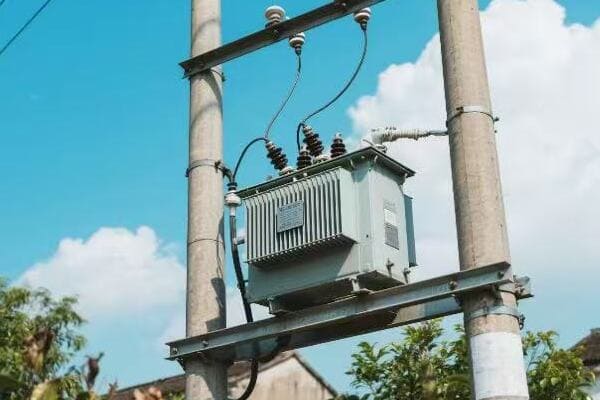
Exploring the Aesthetic and Planning Implications
Let’s delve into how each transformer type affects urban aesthetics and planning:
Pole-Mounted Transformers
-
Visual Impact:
- Visible on skyline
- Can obstruct views
- Part of traditional urban infrastructure look
-
Urban Planning Considerations:
- Require consideration in street and sidewalk design
- Can limit options for tree planting and street beautification
- May conflict with historic preservation efforts
-
Integration Challenges:
- Difficult to conceal or blend with surroundings
- Can create a cluttered appearance in dense areas
- May affect property values in residential areas
Pad-Mounted Transformers
-
Visual Impact:
- Lower profile, less visible from a distance
- Can be concealed with landscaping
- More modern and unobtrusive appearance
-
Urban Planning Considerations:
- Require ground-level space allocation
- Can be incorporated into landscape design
- Allow for more flexible urban design options
-
Integration Opportunities:
- Can be disguised as other street furniture
- Allow for creative concealment solutions
- Generally more acceptable in aesthetically sensitive areas
Here’s a comparison table of aesthetic and planning factors:
| Factor | Pole-Mounted Transformers | Pad-Mounted Transformers |
|---|---|---|
| Skyline Impact | High | Low |
| View Obstruction | Can be significant | Minimal |
| Concealment Ease | Difficult | Relatively easy |
| Space Requirements | Vertical space | Ground-level space |
| Landscaping Compatibility | Limited | High |
| Historic Area Suitability | Often conflicts | Can be adapted |
| Modern Design Integration | Challenging | More flexible |
In my experience working on urban power projects, the aesthetic impact of transformers is often underestimated until it becomes a point of contention. I recall a project in a historic downtown area where the city council initially insisted on keeping pole-mounted transformers to maintain the "traditional" look. However, after we presented visualizations of how pad-mounted transformers could be integrated into the streetscape, they changed their minds.
We ended up using pad-mounted transformers disguised as vintage-style utility boxes. Not only did this preserve the historic aesthetic, but it also allowed for wider sidewalks and more street trees, enhancing the overall urban environment.
One often overlooked aspect of transformer aesthetics is their impact on night-time cityscapes. Pole-mounted transformers, with their silhouettes against the sky, can create a cluttered look in evening skylines. In a recent project for a city aiming to enhance its night-time appeal, we opted for pad-mounted transformers. This choice allowed for cleaner sight lines and more effective architectural lighting of buildings.
The choice of transformer type can also significantly affect urban development patterns. In areas with pole-mounted transformers, I’ve seen how the placement of poles can dictate building setbacks and even influence architectural designs. Conversely, in projects using pad-mounted transformers, we’ve had more flexibility in urban design, allowing for more pedestrian-friendly streetscapes and innovative building layouts.
However, pad-mounted transformers aren’t without their challenges. In dense urban areas, finding suitable locations for ground-level installations can be difficult. I remember a project in a crowded city center where we had to get creative, ultimately integrating the transformers into the design of new public seating areas. This approach not only solved the location issue but also added functional public space to the streetscape.
Another consideration is the long-term adaptability of the urban environment. As cities evolve, the flexibility to modify and upgrade infrastructure becomes crucial. I’ve found that areas with pad-mounted transformers generally offer more flexibility for future changes. In one growing urban district, we were able to upgrade power capacity by replacing pad-mounted units without significantly altering the streetscape, something that would have been more disruptive with pole-mounted transformers.
The impact on green spaces is also a significant factor. In projects where increasing urban tree canopy is a priority, pad-mounted transformers have a clear advantage. They allow for more consistent tree planting along streets, contributing to better air quality, shade, and overall urban livability.
Lastly, it’s important to consider the psychological impact of visible infrastructure on residents and visitors. In surveys I’ve conducted post-project, areas with well-integrated pad-mounted transformers often receive higher ratings for perceived quality of life and aesthetic appeal compared to areas with prominent pole-mounted units.
Ultimately, the choice between pole and pad-mounted transformers in urban settings goes beyond mere aesthetics. It’s about creating harmonious, functional, and adaptable urban environments that serve both the technical needs of power distribution and the quality-of-life aspirations of urban communities.
Cost Analysis: Installation, Maintenance, and Long-Term Economics of Each Transformer Type?
Are you wondering which transformer type will be more cost-effective for your urban project? The financial implications of choosing between pole and pad-mounted transformers extend far beyond the initial purchase price. Many decision-makers overlook crucial long-term economic factors.
Initially, pole-mounted transformers often have lower installation costs. However, pad-mounted transformers can be more cost-effective in the long run due to lower maintenance costs and longer lifespans. The total economic picture includes factors like installation complexity, maintenance accessibility, lifespan, and integration with future smart grid technologies.
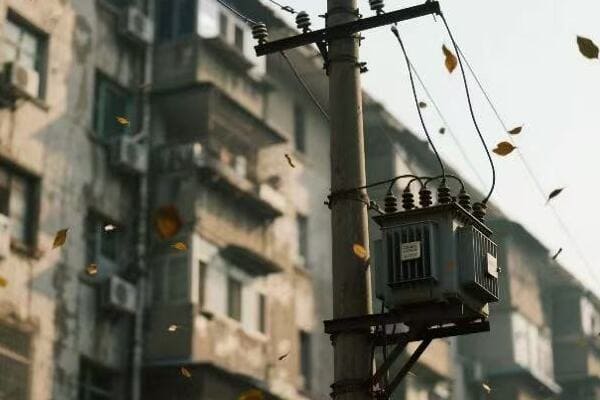
Diving into the Economic Factors
Let’s break down the cost considerations for both transformer types:
Pole-Mounted Transformers
-
Initial Costs:
- Generally lower purchase price
- Lower installation costs in areas with existing poles
- Minimal ground preparation required
-
Maintenance Costs:
- Higher due to exposure to elements
- Require specialized equipment for elevated access
- More frequent replacements due to weather damage
-
Long-Term Considerations:
- Potential for more frequent outages, leading to economic losses
- Limited capacity for upgrades without significant infrastructure changes
- May require more frequent replacements
Pad-Mounted Transformers
-
Initial Costs:
- Higher purchase price
- Higher installation costs, including pad construction
- May require underground cable installation
-
Maintenance Costs:
- Lower due to better protection from elements
- Easier access for maintenance, reducing labor costs
- Less frequent replacements due to better protection
-
Long-Term Considerations:
- Better reliability can lead to fewer economic losses from outages
- Easier to upgrade capacity as urban needs grow
- Longer lifespan, reducing replacement frequency
Here’s a comparison table of economic factors:
| Factor | Pole-Mounted Transformers | Pad-Mounted Transformers |
|---|---|---|
| Initial Purchase Cost | Lower | Higher |
| Installation Cost | Lower (with existing poles) | Higher |
| Maintenance Frequency | Higher | Lower |
| Maintenance Accessibility | More difficult | Easier |
| Lifespan | Shorter (10-15 years) | Longer (20-30 years) |
| Upgrade Flexibility | Limited | More flexible |
| Outage-Related Costs | Potentially higher | Generally lower |
| Smart Grid Integration | More challenging | Easier |
In my years of experience managing urban power projects, I’ve seen how the initial allure of lower costs for pole-mounted transformers can lead to higher expenses over time. I recall a project in a mid-sized city where the initial budget constraints led to choosing pole-mounted transformers. Within five years, the maintenance costs had surpassed the savings from the initial installation.
We conducted a detailed cost analysis comparing the actual expenses of the pole-mounted transformers with projected costs for pad-mounted alternatives. Here’s what we found:
-
Installation Costs:
- Pole-mounted: $5,000 per unit
- Pad-mounted: $8,000 per unit
-
Annual Maintenance Costs:
- Pole-mounted: $800 per unit
- Pad-mounted: $300 per unit
-
Replacement Frequency:
- Pole-mounted: Every 12 years
- Pad-mounted: Every 25 years
Over a 25-year period, the total cost per transformer looked like this:
- Pole-mounted: $5,000 + ($800 x 25) + $5,000 (one replacement) = $30,000
- Pad-mounted: $8,000 + ($300 x 25) = $15,500
This analysis doesn’t even account for the costs associated with more frequent outages in the pole-mounted system or the economic benefits of easier upgrades with pad-mounted units.
One often overlooked aspect is the impact on adjacent businesses. In a commercial district project, we found that businesses near pole-mounted transformers experienced more frequent power fluctuations, leading to equipment damage and lost revenue. After switching to pad-mounted units, these issues decreased significantly, providing indirect economic benefits to the entire area.
The ability to integrate with smart grid technologies is another crucial economic factor. In a recent project, we installed smart pad-mounted transformers that could communicate real-time usage data. This allowed for more efficient load balancing and predictive maintenance, reducing overall operational costs for the utility company.
However, pad-mounted transformers aren’t always the most economical choice. In areas with existing pole infrastructure and stable power demands, the cost of transitioning to pad-mounted units can be prohibitive. I worked on a project in an older residential area where we decided to stick with pole-mounted transformers. The cost of underground cable installation and pad construction would have been significantly higher than the long-term savings.
Another consideration is the cost of land use. In dense urban areas, the ground space required for pad-mounted transformers can be at a premium. I’ve seen cases where the real estate costs associated with pad-mounted installations outweighed their other economic benefits.
The economic impact of aesthetics is also worth considering. In one upscale urban redevelopment project, the use of carefully designed pad-mounted transformers contributed to higher property values and increased tax revenue for the city. While difficult to quantify precisely, this indirect economic benefit was significant.
Lastly, it’s important to consider future-proofing costs. As urban areas grow and power demands increase, the ability to easily upgrade transformer capacity becomes crucial. Pad-mounted transformers generally offer more flexibility in this regard, potentially saving significant costs in future infrastructure upgrades.
In conclusion, while the upfront costs of pad-mounted transformers are typically higher, they often prove more economical in the long run, especially in urban areas with growing power needs and a focus on reliability and aesthetics. However, each situation requires a careful analysis of both immediate budget constraints and long-term economic factors to make the most cost-effective choice.
Environmental Factors: How Weather and Space Constraints Influence Transformer Choice in Cities?
Have you considered how your city’s unique environmental conditions might affect your transformer choice? From extreme weather to limited urban space, environmental factors play a crucial role in determining the best transformer type for urban use.
Weather resilience and space utilization are key environmental factors in choosing between pole and pad-mounted transformers. Pad-mounted units generally offer better protection against severe weather but require more ground space. Pole-mounted transformers are space-efficient but more vulnerable to environmental stresses. Climate trends and urban density significantly influence this decision.
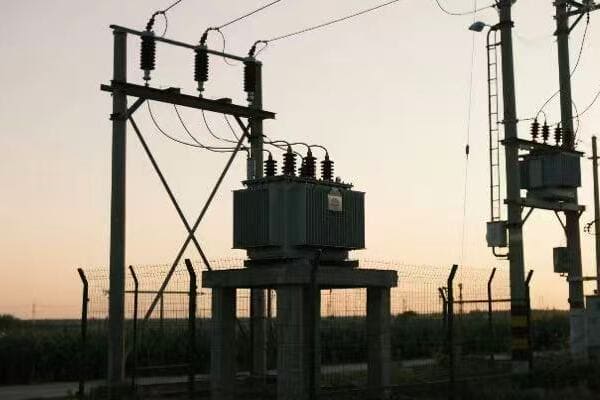
Analyzing Environmental Impacts on Transformer Choice
Let’s explore how environmental factors affect both transformer types:
Pole-Mounted Transformers
-
Weather Considerations:
- More exposed to wind, rain, and lightning
- Vulnerable to ice accumulation in cold climates
- Heat dissipation can be an issue in hot climates
-
Space Utilization:
- Minimal ground footprint
- Can interfere with overhead space and tree growth
- May conflict with urban beautification efforts
-
Environmental Risks:
- More susceptible to damage from falling trees or debris
- Potential oil leaks can be harder to contain
- Bird and animal interactions can cause outages
Pad-Mounted Transformers
-
Weather Considerations:
- Better protected against most weather conditions
- Less affected by wind and ice
- May require flood protection in low-lying areas
-
Space Utilization:
- Requires dedicated ground space
- Can be integrated into urban landscape design
- Allows for more flexible overhead space use
-
Environmental Risks:
- Better containment of potential oil leaks
- Less likely to be damaged by falling objects
- Reduced risk of animal-related outages
Here’s a comparison table of environmental factors:
| Factor | Pole-Mounted Transformers | Pad-Mounted Transformers |
|---|---|---|
| Wind Resistance | Lower | Higher |
| Flood Vulnerability | Lower (if pole is tall enough) | Higher (unless elevated) |
| Heat Dissipation | Can be challenging | Generally better |
| Ice/Snow Impact | Higher risk | Lower risk |
| Ground Space Required | Minimal | Significant |
| Urban Heat Island Effect | Can contribute | Can be mitigated with design |
| Wildlife Interaction | Higher risk | Lower risk |
| Environmental Containment | More challenging | Easier |
In my experience working across various urban environments, I’ve seen how critical environmental factors can be in the transformer selection process. I recall a project in a coastal city prone to hurricanes. Initially, the city had primarily used pole-mounted transformers. After a particularly severe storm season that saw numerous outages due to wind-damaged transformers, we conducted a comprehensive environmental risk assessment.
The results were eye-opening:
-
Wind Damage:
- Pole-mounted transformers: 15% damaged in severe storms
- Pad-mounted transformers: Only 2% affected
-
Flooding Impact:
- Pole-mounted: 5% affected by flood-related issues
- Pad-mounted: 8% affected, but mostly in low-lying areas
-
Heat-Related Issues:
- Pole-mounted: 10% experienced overheating in summer months
- Pad-mounted: 3% had heat-related problems
Based on this data, we initiated a gradual replacement program, prioritizing pad-mounted transformers in the most vulnerable areas. The results were significant – after implementation, storm-related outages decreased by 60%.
However, pad-mounted transformers aren’t always the best choice in every environmental scenario. In a project in a densely populated urban area with limited ground space, we had to stick with pole-mounted transformers despite some environmental concerns. To mitigate risks, we implemented enhanced protective measures, such as reinforced poles and improved insulation.
Climate change is another crucial factor to consider. In areas experiencing increasing temperatures, the heat dissipation capabilities of transformers become more critical. I worked on a project in a city that had seen average summer temperatures rise by 2°C over the past decade. We opted for pad-mounted transformers with advanced cooling systems, which proved more efficient in managing heat than the existing pole-mounted units.
Urban wildlife interaction is an often-overlooked environmental factor. In one suburban project, we found that squirrel-related outages were a significant issue with pole-mounted transformers. Switching to pad-mounted units with better-sealed enclosures virtually eliminated this problem.
The urban heat island effect is another consideration. In a recent downtown revitalization project, we used pad-mounted transformers as part of a broader strategy to reduce urban heat. By integrating the transformers into green spaces and using them as bases for small urban gardens, we not only disguised the units but also contributed to cooling the surrounding area.
Space constraints in cities often lead to creative solutions. In one ultra-dense urban area, we developed a hybrid approach. We used compact pad-mounted transformers in areas with available ground space and specially designed pole-mounted units with enhanced protection in areas where ground space was at a premium. This tailored approach allowed us to optimize for both environmental resilience and space utilization.
Lastly, it’s important to consider future environmental trends. In areas projected to see increased flooding due to climate change, we’ve started implementing elevated pad-mounted transformers or using pole-mounted units with enhanced waterproofing. This forward-thinking approach helps ensure long-term reliability and reduces the need for future infrastructure overhauls.
In conclusion, while pad-mounted transformers often have an edge in environmental resilience, the best choice depends on a careful analysis of specific urban environmental conditions, space constraints, and future climate projections. A nuanced, location-specific approach is key to selecting the most appropriate transformer type for any urban setting.
Conclusion
The choice between pole and pad-mounted transformers in urban settings depends on various factors including design, safety, aesthetics, costs, and environmental considerations. While pad-mounted transformers often offer advantages in safety, aesthetics, and long-term economics, pole-mounted units can be suitable in certain urban contexts. Careful analysis of specific urban needs is crucial for optimal selection.
Free CHBEB Transformer Catalog Download
Get the full range of CHBEB transformers in one catalog.
Includes oil-immersed, dry-type, pad-mounted, and custom solutions.
Quick Message
Request A free quote
We'd like to work with you
- +86 15558785111
- [email protected]
- +86 15558785111
What We Do
CHINA BEI ER BIAN (CHBEB) GROUP, with 218 million in registered capital, originated from Beijing Beierbian Transformer Group. Headquartered in Beijing for R&D, it operates major production bases in Nanjing and Yueqing, producing high-quality products.
Latest Product
address
BeiJing
No 3,RongJing East Road,BeiJing Economic Technological Development Area,BeiJing,China
JiangSu
No 7️Xiangfeng Road,Jiangning,NanJing,JiangSu,China
WenZhou
No.211, Wei 16 Road, Industrial Zone, Yueqing, Wenzhou, Zhejiang, China.
XiangYang Industrial Zone ,YueQing,WenZhou,ZheJiang,China
contact us
- [email protected]
- +86 13057780111
- +86 13057780111
- +86 15558785111
Copyright © Bei Er Bian Group


